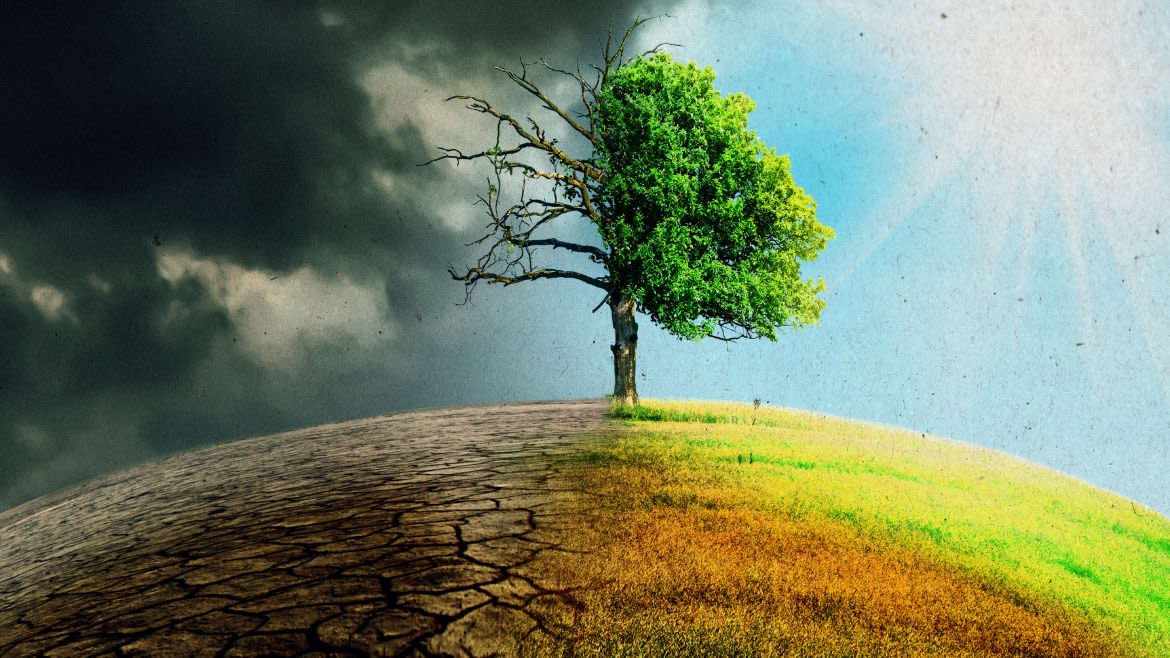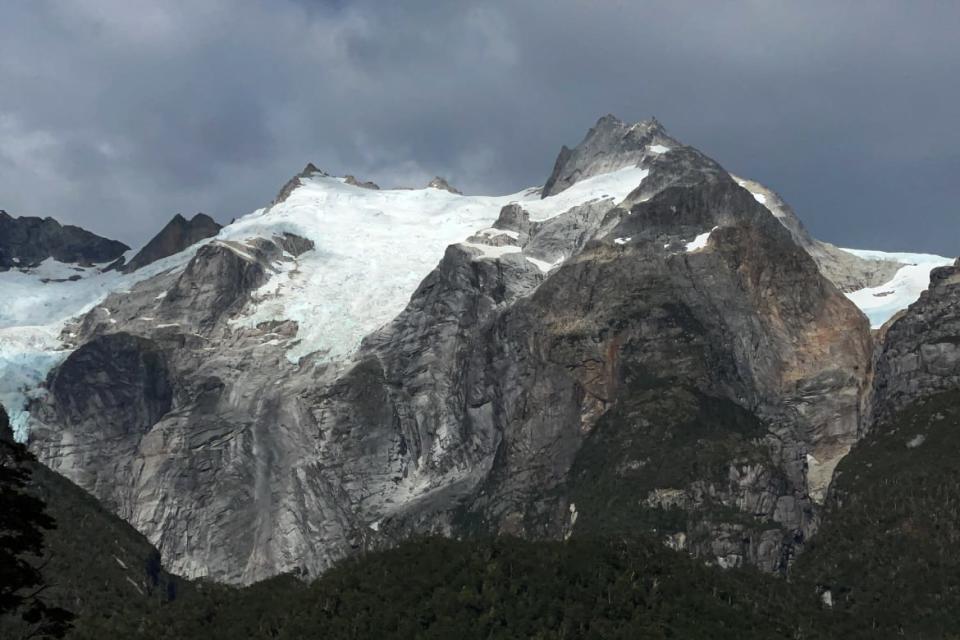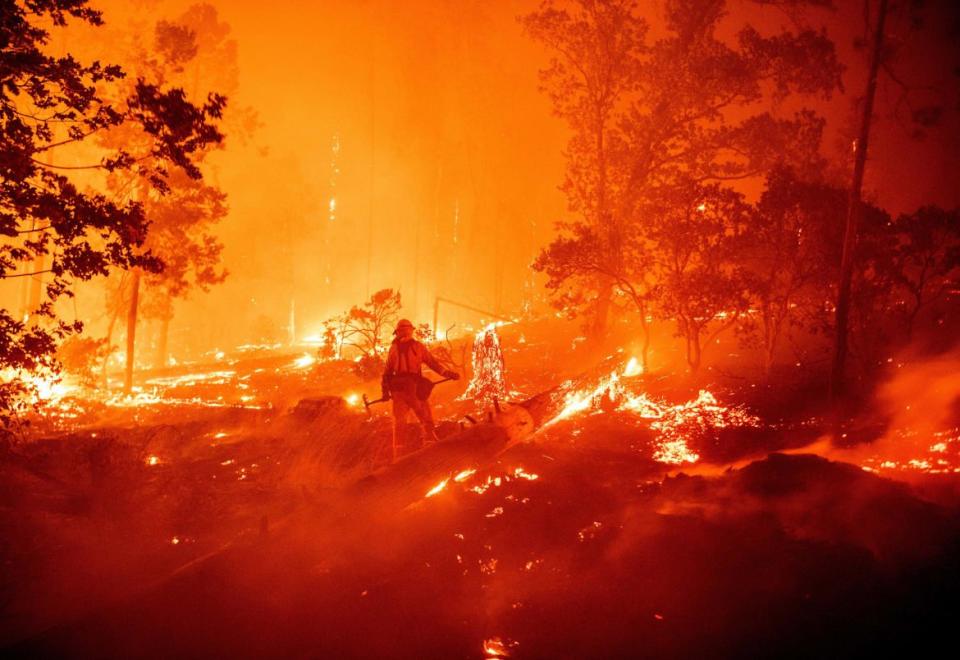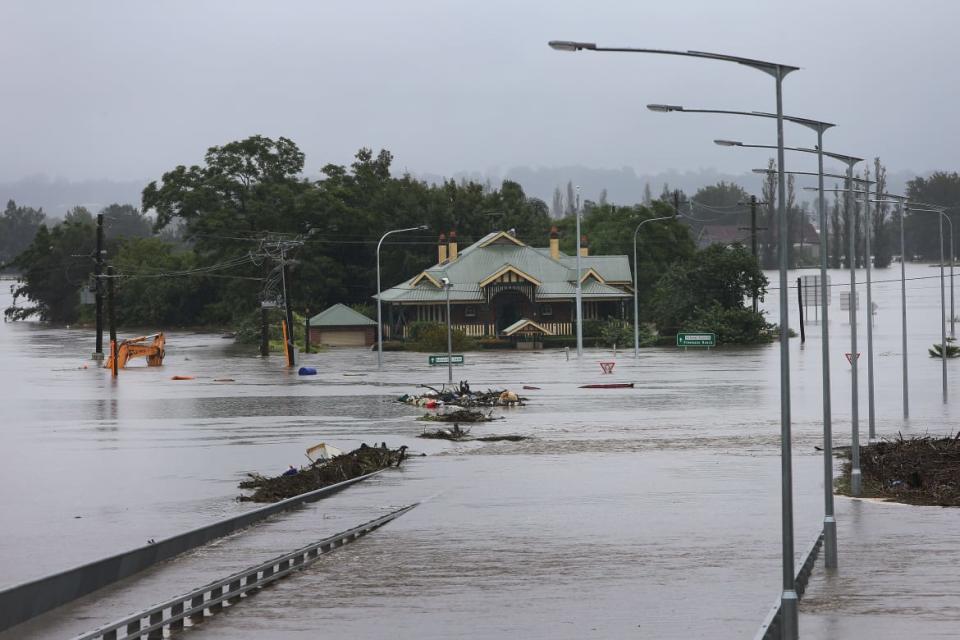The UN’s New Climate Change Report Should Make You Mad as Hell

The largest, most detailed climate change report yet written was released today, clocking in at 3,675 pages, written by 270 researchers for the United Nations’ Intergovernmental Program on Climate Change (IPCC).
With the invasion of Ukraine justifiably dominating the news, the report may not make many headlines. But it should cause you to lose sleep tonight, especially if you have children, and even if you’ve been numbed by decades of gloom and doom when it comes to global climate disruption.
In fact, as someone who’s been writing on climate change since 1998, I think it’s the most important 3,675 pages published this century. Not because it will influence the politicians in the pockets of the fossil fuel industry (i.e. the entire Republican Party plus Sen. Joe Manchin) or those bamboozled by Fox News—it won’t. It’s important because it stands as a record of what scientists know to be true, and what our leaders have failed to bring about.
The 4 Most Damning Climate Change Alarms Raised by the Latest UN Report
When in two decades, my daughter looks out at her wrecked world, devastated by fires and wars and famines, she can point to this report and say, “you knew what was happening, but you didn’t stop it.”
And to that, I will have no reply.
There are 45 “observed impacts” detailed and documented in the report—I’ll focus on the technical summary, which you can read here.

A glacier on the edge of Campo de Hielo Norte, in Aysen, southern Chile, on Feb. 12, 2022. The melting of the glaciers is a natural phenomenon that climate change has accelerated significantly.
Each one of these is not just some think piece that someone wrote on the internet, but the result of years of methodical and transparent data-gathering, all of which is available in the report. And each one details something that is already happening and has already been measured.
Some examples:
Changes to marine and freshwater ecosystems everywhere in the world have caused species losses, higher rates of disease, mass die-offs, destruction of entire ecosystems, and degradations of fisheries. These changes are “unprecedented over millennia.”
More “extreme weather events” (floods, fires, hurricanes) have begun happening even faster than expected. The rate of extreme events in 2020 was initially forecast for the year 2100. Droughts have tripled in the last 50 years, fisheries have collapsed due to extreme heat events, and over 20 million people have been displaced due to extreme weather events (mostly droughts, hurricanes, and floods) in the last ten years.
Global agricultural productivity has actually decreased due to changes in rainfall patterns, increased temperatures, ocean warming, increase in fungal infestations, and numerous other causes.
Roughly half the world population is experiencing “water scarcity” for at least one month per year, and nearly half a billion people are experiencing “unfamiliar precipitation patterns”—droughts in some places, flooding in others.
Glaciers are melting at rates unprecedented in human history.
3.3 billion people live in countries with a high vulnerability to climate change (as extensively defined in the report).
The report next lists 60 “projected impacts,” qualified according to level of risk and expected temperature rise, including:
9 million people will die of climate-related deaths per year by the end of this century. Heat-related deaths will double.
Even if warming increases by only 1.2 degrees—probably far too optimistic, as most scientists believe that 1.5 degrees in warming is now inevitable, even with significant emission reductions—there will be “mass tree mortality,” coral reef bleaching, and “mass mortality events from heatwaves” by 2050. At 1.6 degrees of warming, 10 percent of species will become endangered, with 9 percent at high risk of extinction.
Changes in distributions of animal populations will increase the risk of animal-to-human diseases like SARS, MERS, and COVID-19.
At 2 degrees of warming, between 1 and 3 billion people will experience water scarcity. Glacier floods will wipe out cities downstream. Between 42-79 percent of the world’s watersheds will be disrupted, devastating agriculture.
Low-lying island states will be submerged by 2100, some by 2050. In Europe, coastal flood damage will increase by 1000 percent. Approximately $12 trillion in assets will be located in vulnerable flooding areas.
Impacts will be much worse in vulnerable countries, and in urban centers in Africa and Asia. Mass migrations are difficult to predict, but are to be expected on a scale never before seen in history.
Finally, and perhaps most importantly, the report explains in even-more-excruciating detail that our most audacious attempts to adapt to global climate disruption—seawalls!—are simply not enough to significantly blunt many of these impacts. Large coastal cities, the report says, can be protected, but it’s impossible to move coral reefs, for example, which the report says are effectively doomed after 2040. Meanwhile, “maladaptation,” which solves one problem while making others worse, is likely to accompany any large-scale adaptation. And nothing, the report shows, will really make much of a difference over 2 degrees of warming.

A firefighter works the scene as flames push towards homes during the Creek fire in the Cascadel Woods area of California on Sept. 7, 2020.
So, should we all just give up, then?
Actually, yes and no.
Of course, good environmentalists say no. There is much we can do; after all, the IPCC report devotes several hundred pages to mitigation strategies that could work: building “climate resilience,” shifting power sources, helping vulnerable populations become more resilient (in part by providing basic infrastructure, health, and educational opportunities), conservation (the report recommends up to 30 percent of biodiversity-rich regions be protected, compared with 18 percent today), and so on.
More than just the IPCC report, Project Drawdown has an excellent summary of where greenhouse gases are coming from (25 percent from electricity generation, 24 percent from food and agriculture, etc.) and what can actually be done to reduce them. (Hint: Your personal carbon footprint is meaningless, and in fact the whole concept was developed by fossil fuel companies to evade the systemic change that would be meaningful but bad for their bottom lines.)
There’s even now good data on how to change people’s minds if they’re on the fence, none of which I’ve heeded in this piece.
And the once-derided climate management “geoengineering” method now known as Solar Radiation Management may hold more promise for mitigating the worst of climate change than any emissions reduction would.

The Windsor Bridge is submerged under rising floodwaters along the Hawkesbury River on March 22, 2021 in Sydney, Australia.
But I’m not a good environmentalist. I think jumping to the can-do, fix-it attitude of sustainable development is a mistake, because it skips over an important step: despair.
This report should make you cry, it should make you angry, and it should make you want to get involved in electoral politics to shift power away from West Virginia senators in the pocket of the coal mining industry. (On the same day this apocalyptic report was released to the public, the conservative-packed Supreme Court appeared ready to stop the EPA from doing anything about climate change at all, which even power companies have begged them not to do.)
Most of all, this report should make you really fucking think about the world you are leaving for your kids, if you have them, or for everyone else in the world, if you don’t.
And before you jump to conclusions about what we can do to help—especially if it involves virtuous personal sacrifice that doesn’t make a whit of difference in the actual world—you should feel bad. You should feel very bad.
10 Images That Explain What to Expect From Climate Change
Climate chaos will make everything bad, worse. Just imagine the impact that 500 million climate refugees will have on the popularity of authoritarian nationalists like Putin, Modi and Trump. Just think for a moment about the level of instability and violence that will result from massive droughts, famines, extinctions, and extreme heat events all over the world—affecting rich and poor alike but, of course, hitting the poor worse.
The climate activist and Buddhist teacher Joanna Macy has written that a lot of our culture’s climate denial comes from the sheer scope of the crisis, our inability to handle a global ecocide of this magnitude. That’s certainly true on the know-nothing Right, which denies any science that threatens its worldview, from vaccine efficacy to evolution. But it’s also true on the Left and in the Center, where climate change is often put on a shelf, just one more thing to worry about.
Global climate disruption is not just one more thing to worry about—it is the thing to worry about, because it threatens the survival of life on earth and will make every other problem we face that much worse. As a rabbi, a dad, and some dude on the internet, I dare you to read the summaries of the IPCC report and maybe a chapter or two that you find interesting. I dare you to let yourself really absorb the impact of what scientists have already measured and now predict for the very near future.
I dare you to be as devastated as I am.
Get the Daily Beast's biggest scoops and scandals delivered right to your inbox. Sign up now.
Stay informed and gain unlimited access to the Daily Beast's unmatched reporting. Subscribe now.
